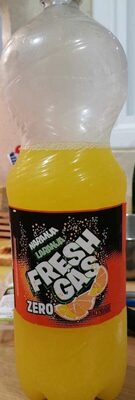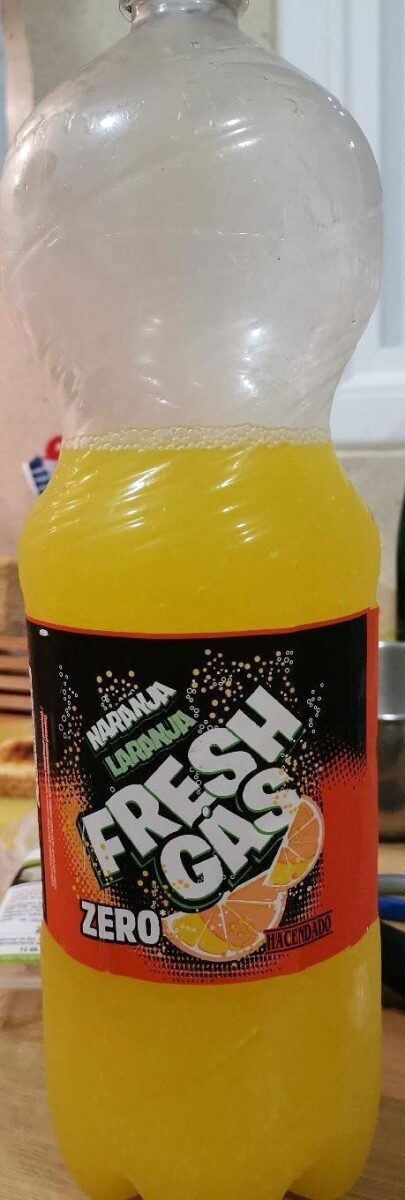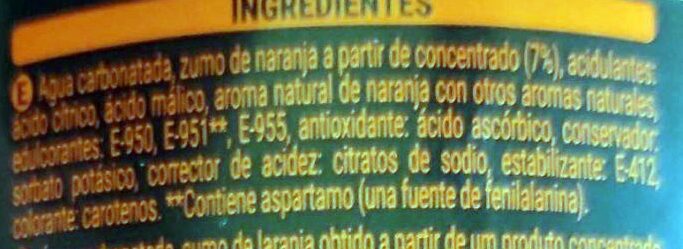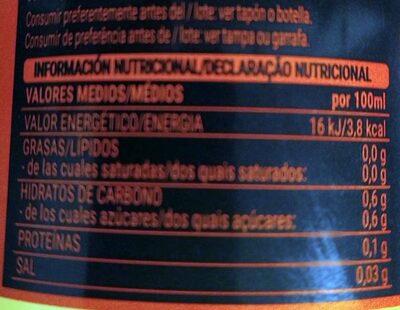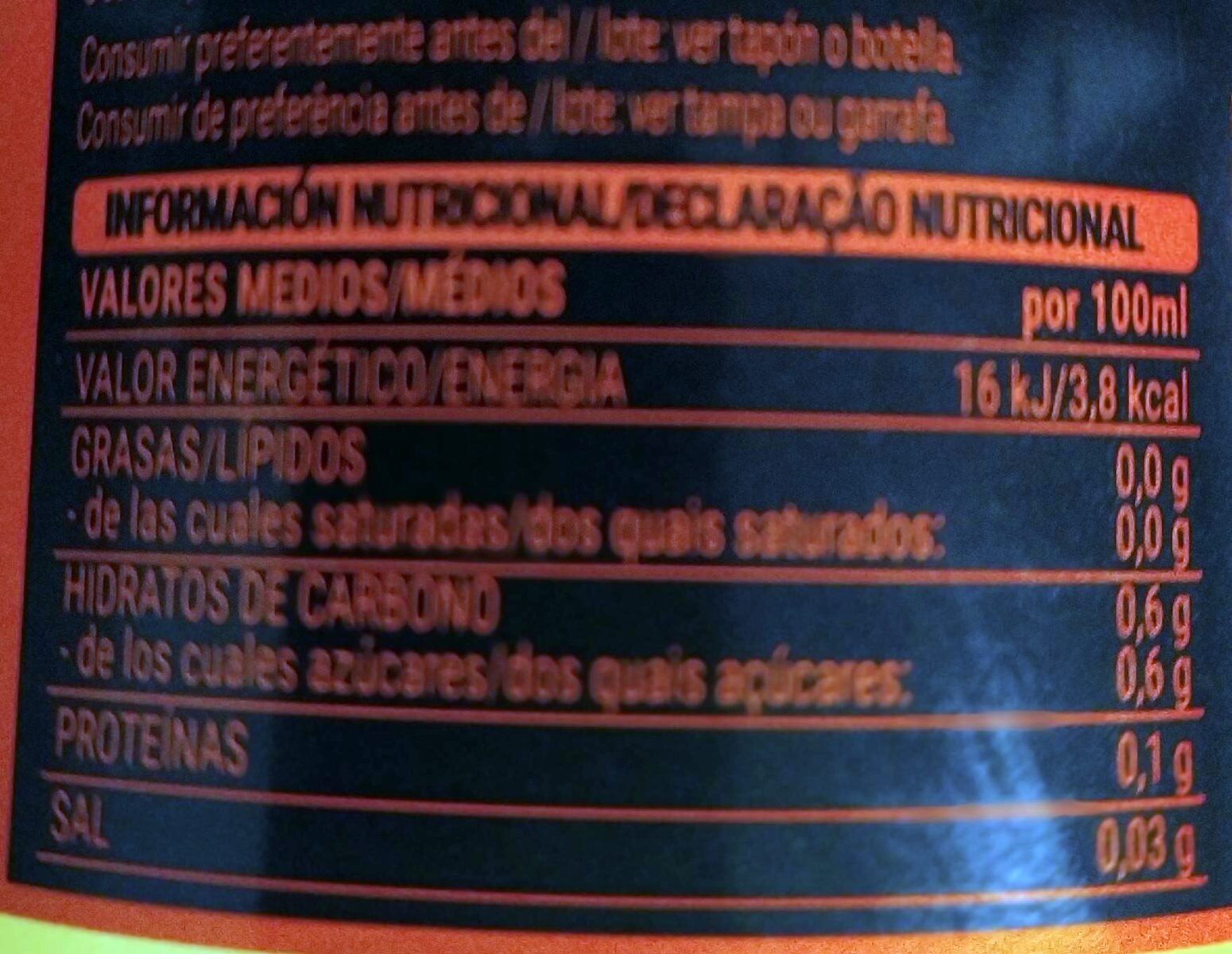Fresh gas naranja zero - Hacendado - 2 l
This product page is not complete. You can help to complete it by editing it and adding more data from the photos we have, or by taking more photos using the app for Android or iPhone/iPad. Thank you!
×
Barra-kodea: 8480000290762 (EAN / EAN-13)
Izen arrunta: Bebida refrescante de zumo de frutas, con edulcorantes
Kopurua: 2 l
Ontziratzea: es:Green dot
Markak: Hacendado
Kategoriak: en:Plant-based foods and beverages, en:Beverages, en:Plant-based beverages, en:Carbonated drinks, en:Fruit-based beverages, en:Artificially sweetened beverages, en:Sodas, en:Diet beverages, en:Fruit sodas, en:Diet sodas, en:Orange soft drinks, en:Light fruit sodas, en:Light orange soft drinks
Etiketak, ziurtagiriak, sariak:
en:Low or no sugar, en:Contains a source of phenylalanine, en:Green Dot, No sugar, en:With sweeteners
Dendak: Mercadona
Saltzen diren herrialdeak: Espainia
Matching with your preferences
Ingurumena
Ontziratzea
Transportation
Report a problem
Datuen iturria
Product added on by kiliweb
Last edit of product page on by alia.
Produktuaren orria -gatik editatua elcoco, fix-salt-bot, hungergames, musarana, openfoodfacts-contributors, roboto-app, teolemon, thaialagata, yuka.RjRJclA1MEdtZHNNcFAwOXJ4RHU2UDU4ektDNUJENitHZkVVSVE9PQ, yuka.VjZ4UU01UStxTUVIcThJUXdUMzQ5OHg1eUp1dGNqT1FETklTSVE9PQ, yuka.WDU4UE5hTXN1Tmdwd2ZZUnhSWFd5dGtyMzdqemVsdXNGT2tWSWc9PQ, yuka.WjVwZFRZbGZ1dndKZ2ZSaXJnUHJwTTh2NTg3NVptV1NjK1VmSVE9PQ.
